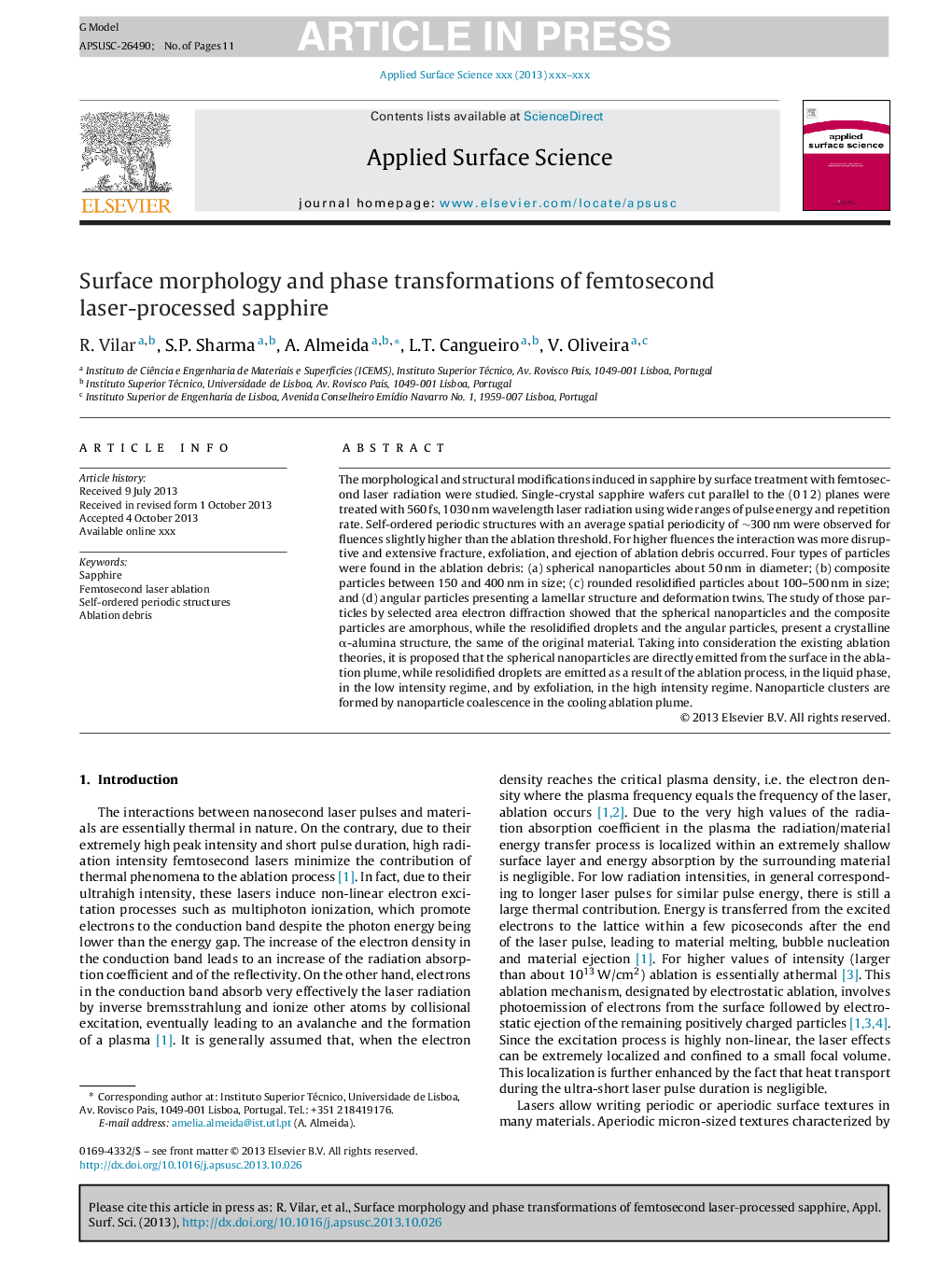| Article ID | Journal | Published Year | Pages | File Type |
|---|---|---|---|---|
| 5351846 | Applied Surface Science | 2014 | 11 Pages |
Abstract
The morphological and structural modifications induced in sapphire by surface treatment with femtosecond laser radiation were studied. Single-crystal sapphire wafers cut parallel to the (0 1 2) planes were treated with 560 fs, 1030 nm wavelength laser radiation using wide ranges of pulse energy and repetition rate. Self-ordered periodic structures with an average spatial periodicity of â¼300 nm were observed for fluences slightly higher than the ablation threshold. For higher fluences the interaction was more disruptive and extensive fracture, exfoliation, and ejection of ablation debris occurred. Four types of particles were found in the ablation debris: (a) spherical nanoparticles about 50 nm in diameter; (b) composite particles between 150 and 400 nm in size; (c) rounded resolidified particles about 100-500 nm in size; and (d) angular particles presenting a lamellar structure and deformation twins. The study of those particles by selected area electron diffraction showed that the spherical nanoparticles and the composite particles are amorphous, while the resolidified droplets and the angular particles, present a crystalline α-alumina structure, the same of the original material. Taking into consideration the existing ablation theories, it is proposed that the spherical nanoparticles are directly emitted from the surface in the ablation plume, while resolidified droplets are emitted as a result of the ablation process, in the liquid phase, in the low intensity regime, and by exfoliation, in the high intensity regime. Nanoparticle clusters are formed by nanoparticle coalescence in the cooling ablation plume.
Keywords
Related Topics
Physical Sciences and Engineering
Chemistry
Physical and Theoretical Chemistry
Authors
R. Vilar, S.P. Sharma, A. Almeida, L.T. Cangueiro, V. Oliveira,
